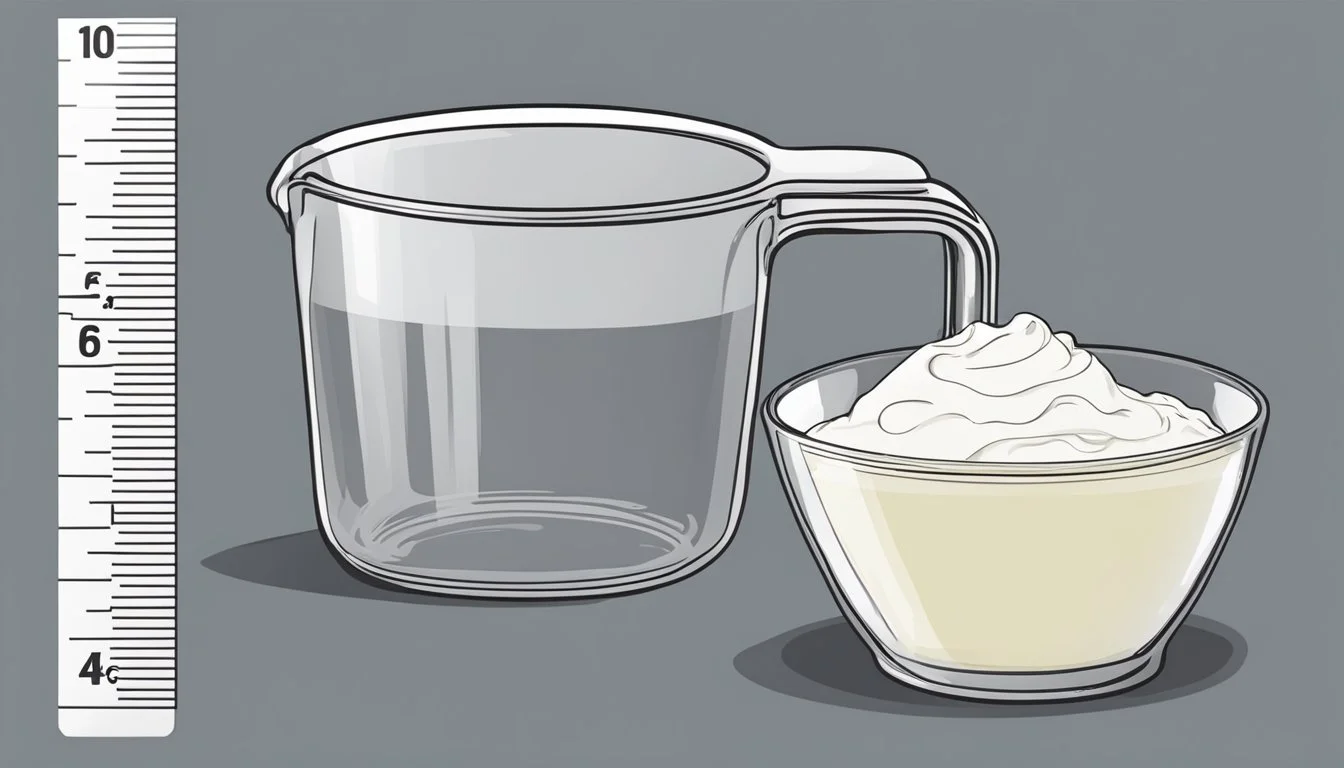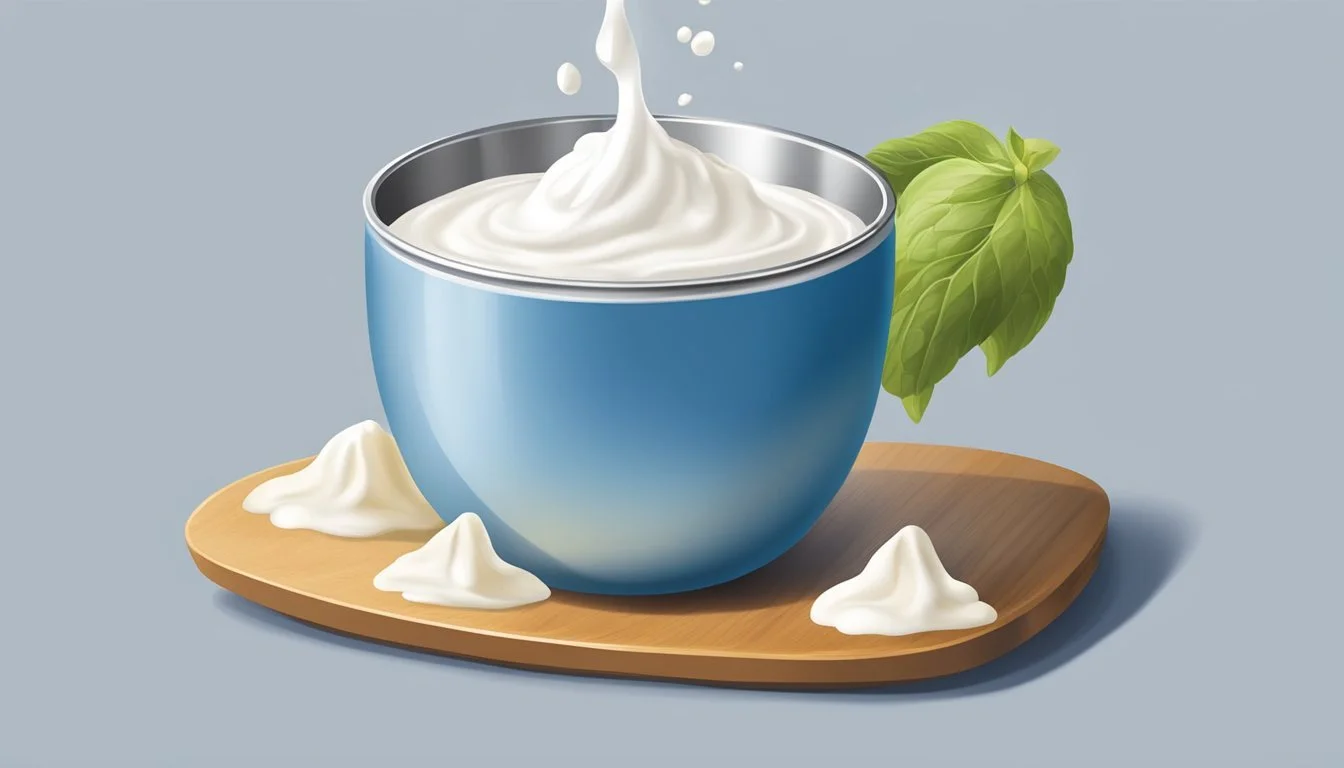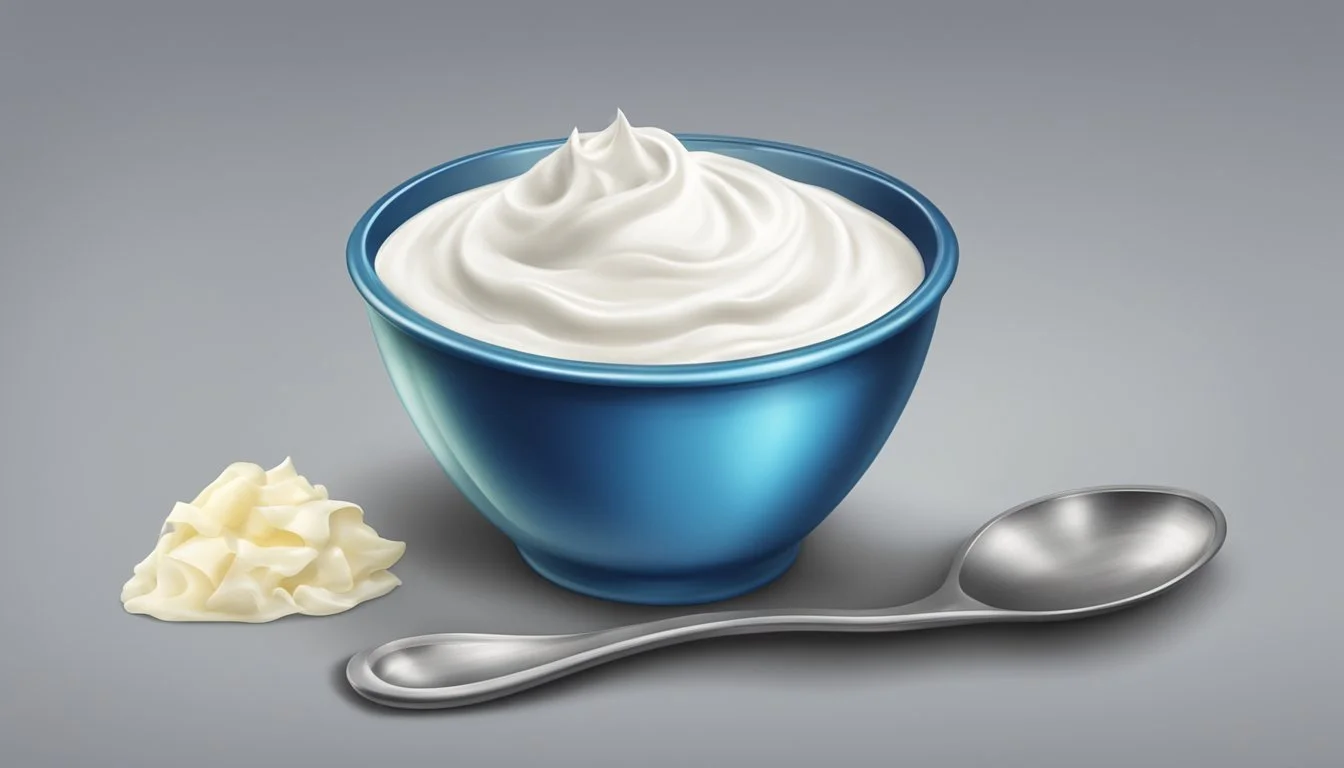How Many Ounces in a Cup of Sour Cream
Accurate Measurement Guide
When measuring ingredients for a recipe, precision can be crucial, especially with components like sour cream, which contribute significantly to the dish's texture and flavor profile. A standard measure in the United States is the cup, but when a recipe calls for an amount in ounces, it can lead to some confusion. A cup of sour cream is conventionally considered to be 8 ounces in weight. However, due to its density, sour cream can have slight variations in weight per cup.
The exact amount of sour cream in ounces can hinge on factors such as temperature and the sour cream's consistency. Some sources might even state the weight of one cup of sour cream to be slightly more than the standard 8 ounces, pinpointing a figure around 8.65 ounces. This discrepancy emphasizes the importance of understanding measurement conversions in cooking and baking, ensuring that recipes are followed with accuracy for the best results.
A cup, defined as 8 fluid ounces in the United States, is not a direct conversion for all ingredients due to varying densities. With sour cream, the conversion also touches on the difference between fluid ounces, which measure volume, and ounces, which can also measure weight. This differentiation is essential for precision in cooking, where volumetric and weight measures sometimes intersect. Keeping these conversions and measurements in mind ensures the creation of consistently successful culinary dishes.
Understanding Measurements
When it comes to measuring sour cream, it is crucial to differentiate between weight and volume to ensure accuracy in recipes. The correct application of units of measurement and their conversions play a pivotal role in cooking and baking.
Volume Versus Weight
Volume and weight are fundamentally different concepts in the kitchen. Volume measures the space an ingredient occupies, while weight refers to the mass of an ingredient. Sour cream is often sold by weight (ounces or grams), but many recipes call for volume measurements (cups or tablespoons).
Units of Measurement
In culinary practices, the volume unit of a cup is commonly used for liquid or semi-liquid ingredients like sour cream. The ounce can refer to both a unit of weight and volume (fluid ounces). When discussing sour cream, recipes may specify fluid ounces for volume or ounces for weight, which are not interchangeable.
Volume Unit Conversions
Converting between cups and fluid ounces is an essential skill in the kitchen. For sour cream:
1 cup = 8 fluid ounces
Here's a simplified conversion table for sour cream:
Cups Fluid Ounces 1 8 1/2 4 1/4 2
It's important to note that these conversions assume a standard cup measurement in the United States, equating to approximately 240 milliliters.
Standard Measurements for Ingredients
When cooking or baking, precise conversions between cups and ounces are crucial for ingredient measurements. This section focuses on understanding these conversions, with particular attention to sour cream, and provides a reference for common ingredients.
Cup to Ounce Conversion
For dry and wet ingredients, one U.S. cup (a standard unit of volume) is generally considered to equal 8 fluid ounces (fl oz). However, the weight in ounces will vary depending on the ingredient because of its density. A converter is often used to translate cups to fluid ounces when volume is the measurement in question. To assist with precise and fractional values, conversion charts or digital tools can expedite the process.
Sour Cream Specifics
Sour cream is denser than some liquids, so while one cup of water would weigh 8.345 ounces, one cup of sour cream weighs approximately 8 ounces, or 227 grams. This specific information is important for recipes that require exact sour cream measurements, and one must remember that this conversion pertains to volume-to-weight for this particular ingredient.
Common Ingredient Conversions
Accurate measurements of some frequently used ingredients are integral to recipe success. Below is a quick reference table for conversions:
Ingredient 1 Cup Volume Weight in Ounces Weight in Grams Water 8 fl oz 8.345 oz 236.59 ml All-purpose Flour 1 cup 4.25 oz 120.48 g Sugar (Granulated) 1 cup 7 oz 198.45 g Butter 1 cup 8 oz 227 g
It's useful to note that tablespoons and teaspoons are also often converted, where 1 tablespoon equals 0.5 fl oz or approximately 14.79 ml, and 1 teaspoon is about one third of a tablespoon or 4.93 ml.
Measurement Tools and Techniques
When measuring sour cream for cooking and baking, precision is key. The tools and techniques used can significantly affect the accuracy of measurements and, consequently, the outcome of a recipe.
Standard Cooking Measures
In the United States, cooking measurements for sour cream and other ingredients often follow standard units. Sour cream is typically measured in fluid ounces (fl oz), cups (c), tablespoons (Tbsp), and teaspoons (tsp). A standard U.S. cup measures 8 fluid ounces, and by extension, one cup of sour cream should weigh approximately 8 ounces. However, due to sour cream's density, a metric cup (250 mL) or a UK cup (284 mL) may result in different weights, hence the importance of using the correct cup measure for a recipe.
Using Measuring Spoons and Cups
It's essential to use the right tools such as measuring spoons and cups for accuracy. To measure sour cream:
Use a spoon to scoop sour cream into a measuring cup.
Level the top with the straight edge of a knife for an accurate measure.
For dry ingredients, which are not relevant to measuring sour cream, one would use the same method but with a slight variation suitable for the ingredient's consistency.
Accuracy in Measurement
Accuracy is crucial, especially in baking. To ensure precise measurements of sour cream:
Tare the scale before use if measuring by weight.
Make sure measuring cups are filled without air gaps and leveled off.
Consider the difference between liters and fluid ounces when converting between metric and U.S. standard measures.
By adhering to these measurement techniques and using the appropriate tools, one can achieve the level of accuracy necessary for successful culinary endeavors.
International Measurement Variations
When discussing how many ounces are in a cup of sour cream, one must be aware of the variations in measurements that exist internationally. These differences can affect both volume and weight.
Global Measurement Differences
Each country may have its own standard for what constitutes a "cup" or an "ounce," leading to potential discrepancies. In the United States, a cup of sour cream is generally considered to equal 8 ounces by volume. However, this is not a universal standard, and other countries may have different measurements for what makes up a cup.
US tablespoon: 1 US cup = 16 US tablespoons
Canadian tablespoon: 1 Canadian cup = 16 Canadian tablespoons (slightly larger than US tablespoons)
Australian tablespoon: 1 Australian cup = 20 Australian tablespoons (20 mL each)
Imperial tablespoon: 1 imperial cup = approximately 16 imperial tablespoons (the imperial tablespoon is about 17.7 mL)
These differences mean that a cup of sour cream in the United States could potentially have a different ounce equivalent in countries that use Canadian, Australian, or imperial measurements.
Cup Equivalents in Different Countries
One must consider the actual volume of a cup when converting ounces to cups internationally. Here are some specifics:
Canadian cup: Roughly 227 mL (close to the 240 mL U.S. cup, but slightly less)
Australian cup: 250 mL
Imperial cup: Traditionally 284 mL
Canadian, Australian, and the Imperial systems define cups of different volumes, which means the ounce equivalent will alter accordingly. The table below compares the cup equivalents in these countries:
Measurement System Cup Volume US 240 mL Canadian 227 mL Australian 250 mL Imperial 284 mL
To accurately convert ounces to cups of sour cream, one must know the specific volume definition of a "cup" according to the relevant measurement system being used.
Conversions and Calculations
This section covers the practical applications of converting the volume of sour cream from cups to ounces and vice versa, focusing on the accurate use of calculator tools and the basic mathematical principles underpinning these conversions.
Calculator Tools
Calculator tools are utilized to seamlessly convert between cups and ounces, often with interfaces that accept a variety of inputs, including decimals, integers, and mixed numbers. These calculators can provide immediate results and help avoid the approximation error that can occur with manual calculations. Users should ensure that their calculator operates in the appropriate units and that it can handle significant figures to a suitable degree of precision.
For instance, if converting one cup of sour cream to ounces using a calculator, the user would input '1' in the cups field and receive the equivalent ounces as output. Such tools might also allow for fractional inputs, such as 1/2 or 3 1/2 cups, and give the corresponding weight in ounces.
Mathematical Basics for Ingredient Conversions
Understanding the fundamental mathematics of ingredient conversions is essential, as it enables accurate recipe scaling or substitutions. Here, knowledge of basic volume unit conversions is applied:
1 US cup = 8 US fluid ounces
When converting from cups to ounces, the user multiplies the number of cups by 8 to find the equivalent volume in ounces.
Cups (Decimal Value) Ounces (Calculation) Ounces (Result) 0.5 (1/2 cup) 0.5 x 8 4 oz 1.0 (1 cup) 1.0 x 8 8 oz
Conversely, to convert from ounces to cups, one divides the number of ounces by 8.
Ounces (Integer) Cups (Calculation) Cups (Decimal Value) 4 oz 4 / 8 0.5 (1/2 cup) 8 oz 8 / 8 1.0 (1 cup)
Users should be aware of maximum denominator considerations when expressing the conversions as fractions, to keep them as simple as possible for recipe use.
Practical Application in Recipes
In the culinary world, precision is crucial, especially when it comes to measuring ingredients like sour cream. Understanding the conversion between ounces and cups can make a significant difference in the texture and flavor of a dish.
Baking and Cooking
When a recipe specifies a measurement in cups for sour cream, chefs need to accurately translate that into ounces to ensure the desired outcome in both baking and cooking. It's widely accepted that 1 US cup of sour cream equals approximately 8 ounces or 240 grams. For instance, if a recipe calls for half a cup of sour cream, one should measure out roughly 4 ounces.
For recipes requiring sour cream in larger quantities, understanding the conversion avoids any discrepancy that could affect the dish. In recipes where sour cream acts akin to butter or milk, its precise measurement can be as crucial for the chemical reactions during baking.
Here are some common conversions:
2 US cups of sour cream = 16 ounces
3 US cups of sour cream = 24 ounces
6 US cups of sour cream = 48 ounces
When measuring sour cream, one should use a level tablespoon, meaning the spoon is filled and then scraped level. In contrast, recipes that call for a heaped, heaping, or rounded spoonful indicate the sour cream should not be leveled off, and more than the exact measure is desirable.
It is important to note that ingredient measurements should be adjusted accordingly when using metrics other than US cups, as there are differences in volume measurements in different countries. Therefore, staying informed about these conversions is imperative for anyone serious about their craft in the kitchen.
Nutritional and Legal Considerations
When measuring and labeling sour cream, consumers and manufacturers must adhere to rigorous nutritional and legal guidelines. These standards ensure product quality and provide essential information to the public.
FDA Standards for Food Labeling
The Food and Drug Administration (FDA) regulates the food labeling practices in the United States. Manufacturers are required to list the net contents of their products both in ounces (oz) by weight and the metric equivalent. Accurate labeling is crucial as it can affect an individual’s health, finances, or property if misleading. For sour cream, discrepancies in the weight-to-volume conversion could lead to potential health risks, especially for those on calorie-restricted diets.
Legal requirements include:
Listing the net weight in ounces (oz)
Providing a metric system equivalent (grams or milliliters)
Adherence to standardized measuring practices
Labeling accuracy must account for the potential for errors or omissions, and a disclaimer may be present to indicate the degree of possible variation in numerical results.
Understanding Nutrition Labels
Nutrition Facts labeling provides consumers with a detailed breakdown of a food product's nutritional content. Sour cream labels typically display information per serving size, often measuring in both weight (oz) and volume (cups). It’s important for consumers to recognize that the conversion from ounces to cups is not straightforward since it depends on the density of the substance. For sour cream, 1 ounce by weight does not equal 1 fluid ounce in volume.
Nutrition labels typically include:
Calories
Total fat (broken down into saturated, monounsaturated, and polyunsaturated fat)
Cholesterol
Sodium
Total Carbohydrates
Proteins
Vitamins and minerals, if applicable
Manufacturers are mandated to ensure that nutritional facts are presented clearly to avoid causing any risk to health from nutritional misunderstandings. This accurate information allows consumers to make informed decisions in line with their dietary needs.
Ingredient Specific Density Factors
When it comes to kitchen measurements, density plays an integral role, especially because ingredients vary widely by weight even when volume remains the same. Precise measurements are crucial for the success of recipes, as the density of each ingredient will determine its weight in a given volume.
Density of Common Ingredients
Flour: When measuring all-purpose flour, one cup typically weighs 4.25 ounces (120 grams). The density of flour can affect the weight, which is why aeration or packing during measurement can lead to significant discrepancies.
Sugar: Granulated sugar, another baking staple, has a higher density. One cup of granulated sugar usually weighs around 7 ounces (198 grams). Unlike flour, sugar granules are less affected by aeration, but leveling the measuring cup can ensure a more accurate measurement.
Density differences explain why the same volume of flour and sugar weighs differently. Cooking often requires precise proportions, and this discrepancy can greatly affect the outcome of a recipe. When measuring ingredients for baking, where precision matters, many professional bakers prefer weight measurements (often in grams or pounds) to ensure consistency and accuracy. A kitchen scale can be an invaluable tool for dealing with the variance in ingredient densities.






